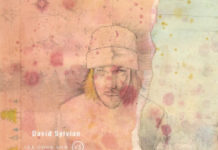This month marks the 25th anniversary of the release of the second album by Manchester’s finest, Oasis, an album that was offered to the public slap, bang in the middle of the height of Britpop and arguably still hits the right notes.
Let’s rewind to the early 1990s and consider just how groundbreaking Oasis, and their fellow Britpop acts, were to the not just the music scene, but also across all manner of style, fashion and even political lines.
Oasis set the trend with the brand of ‘in your face’ balladeering, their swagger on stage was matched by a fashion sense that was soon replicated across the UK and beyond.
Liam Gallagher found himself the darling of the press and fronted just about fashion mag doing the rounds, from GQ to Esquire, with every ‘lad’s’ mag in between. He was of course usually pictured alongside an attractive girlfriend, or wife, or two.
Hell, even in 2019 the former Oasis frontman found himself the subject of a lengthy Q+A with Vogue magazine. The cultural impact of the band is undeniable, men of a certain age wanted to be them and certainly did their best to dress and act like them too. Be that while wearing chunky sunglasses, which thankfully you can now consider the option to try on glasses online, or a Fred Perry shirt and stylish Doc Marten boots.
A lot has changed since then.
2020 finds the Gallagher brothers working hard to make the most of their respective solo careers; Noel’s act The High Flying Birds, have released three critically acclaimed albums before going on something of a hiatus since their last major tour in 2019.
Liam put Beady Eye, his previous band, to bed in 2014 and has elected to release his efforts in a more pared down manner, with his last effort, Why Me? Why Not, proving a major success in the UK, but the painful truth is that the pair are never as good as when they are working alongside other members of Oasis.
Listening to What’s the Story Morning Glory, WTSMG, 25 years on still brings goosebumps to those who grew up during the peak of the Britpop era, and the quality of the record lives beyond the sheer nostalgia.
It would have been easy for Oasis to ‘phone it in’ after the unmitigated success of their first album, Definitely Maybe in 1994, but what Liam, Noel, “Bonehead”, “Guigsy”, Alan, and to a lesser extent, Tony, created over the course of three months in a studio south Wales can certainly be considered a modern masterpiece.
Whereas Definitely Maybe benefited from a somewhat rough ambience, a lack of strong production, which gave their debut album the feel of an act looking to burst onto the scene, WTSMG is a more polished effort.
Producer Owen Morris layers the audio superbly, especially on anthemic closer Champagne Supernova, while also allowing show-stoppers such as Roll With It and Some Might Say to truly rock the listener.
The album really comes to life due to the rapid maturity shown by chief songwriter Noel, with classics such as Don’t Look Back in Anger and Wonderwall, that have not only stood the test of time, but have in fact developed an extended appeal all these years later.
The success of the album saw Oasis solidify their base and the supporting live shows were immense in scale. Famously two concerts at Knebworth saw the band perform to over 250,000 people, a show that astoundingly saw 2.5m people apply for tickets.
What’s the Story Morning Glory has gone on to sell in excess of 22 million and saw Oasis do what arch Britpop rivals Blur couldn’t, as they blew a massive hole in the American market. Any cursory glance across all manner of social networks shows that the album is still very much loved, with countless posts celebrating this 25th anniversary milestone effusively.
In 2020 there is a general consensus that Oasis have become something of a marmite act, either you love them or you loathe them. There are some who feel that their overall musical offering is one-note or lacking substance, but such a characterization is unfounded.
Others feel the need to deride the band, electing for some reason to instead laud the likes of Blur or Radiohead, as if there was a need to eradicate the existence of one band in order to praise another. There doesn’t, of course, need to be a mutual exclusivity to the argument.
There was, and still is, plenty of room for all these bands to muster your affection.






